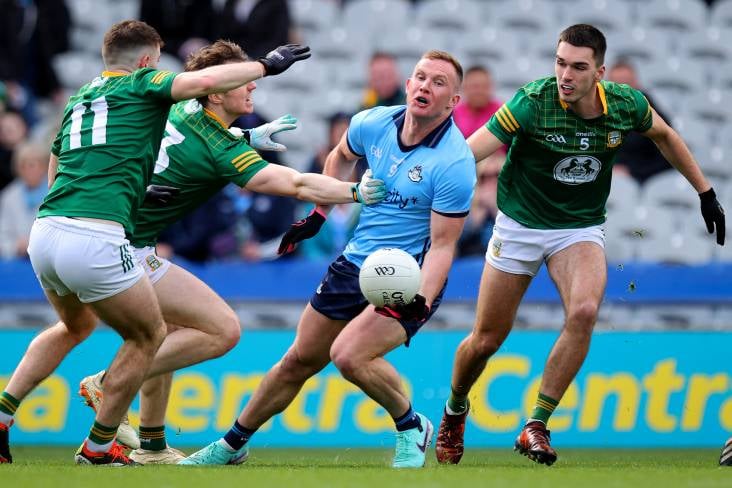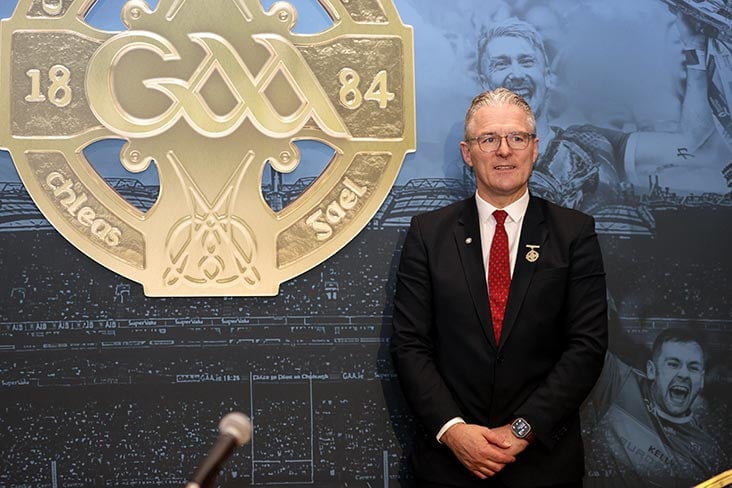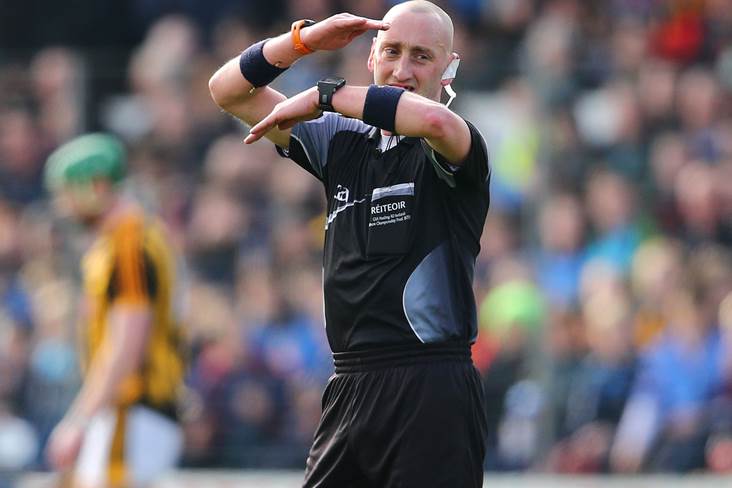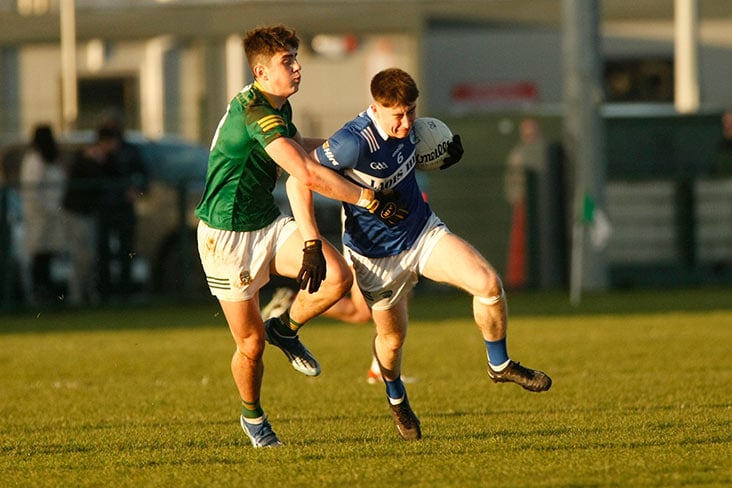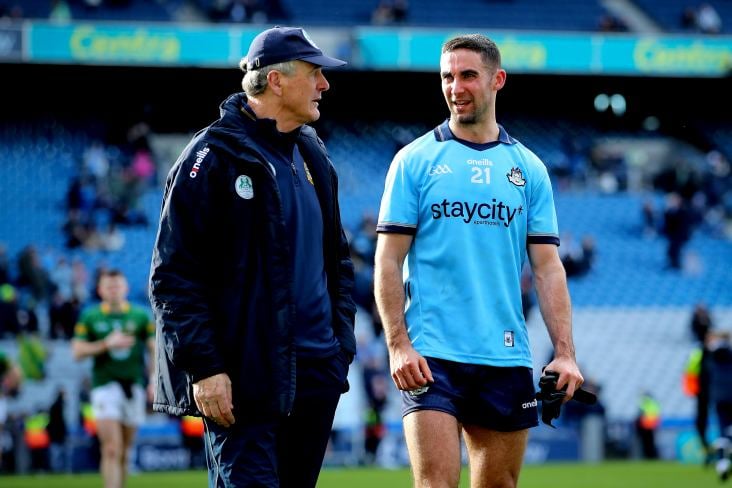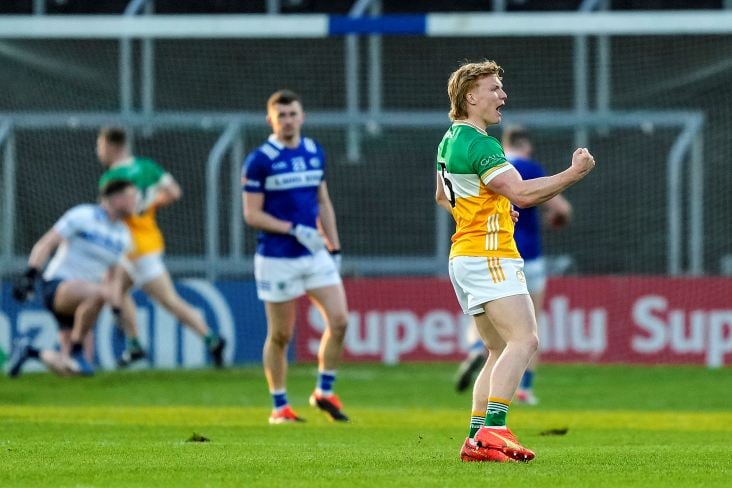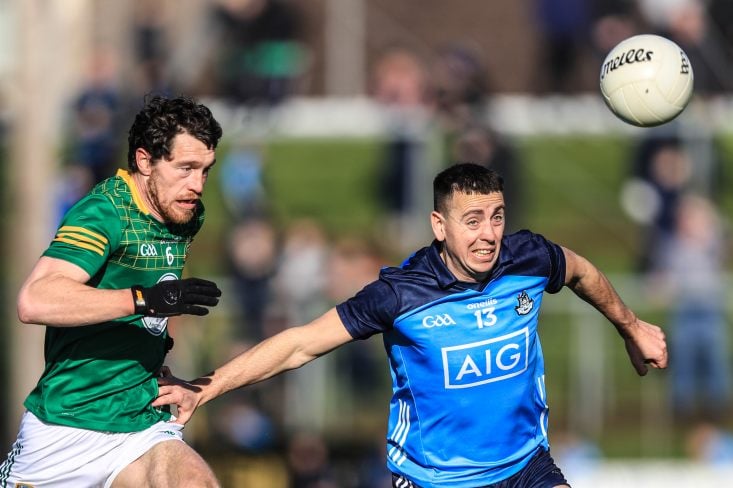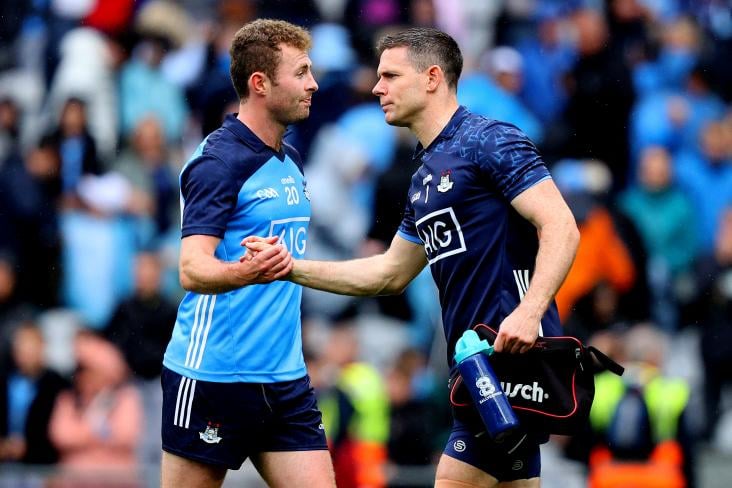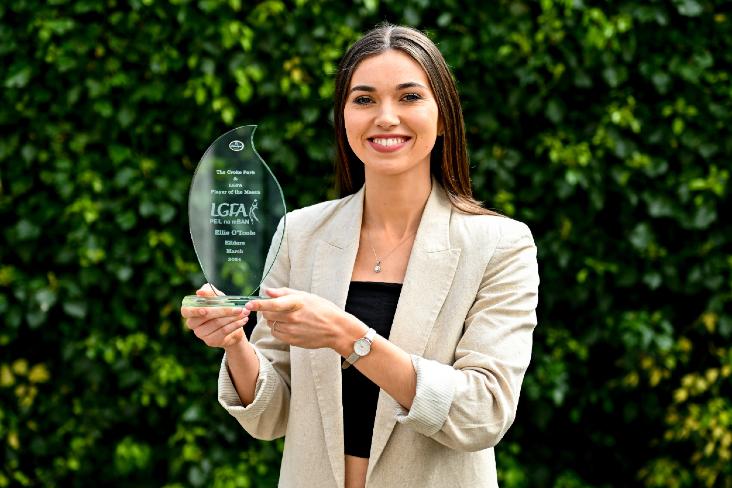GAA urged to draw up national concussion register
February 18, 2021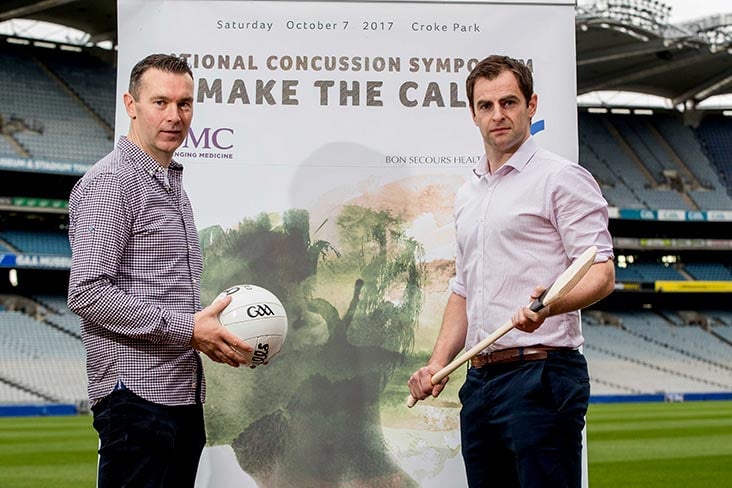
Oisin McConville and Dr Brendan Murphy at the National Concussion Symposium Media Briefing in Croke Park
By Declan Rooney
The GAA and other sporting organisations have been urged by a concussion expert to introduce a national surveillance system for all levels of the game in order to accurately study the prevalence and risk factors for it in our sports.
NUI Galway lecturer, Dr Lindsay Sullivan, some of whose studies have focused on concussion education in underage GAA players, warned that it is not only sports like rugby and American football that should educate themselves surrounding the dangers of the issue.
According to Dr Sullivan’s prior studies, one in four athletes self-reported playing while experiencing symptoms of concussions, while international research suggests that up to 50 per cent of all concussions go unreported and that male athletes are less likely to report a concussion than females.
“There has been some high quality research conducted in the last year or two examining concussion in GAA sports. However, since there is no national concussion surveillance system, we are not truly capturing the prevalence or the extent of the concussion issue – in any sport in Ireland,” said Dr Sullivan.
“In addition to concussion education and awareness campaigns, I think creating a national concussion surveillance system should be one of the first steps. There needs to be a national concussion surveillance system that collects data on the prevalence of concussion in sport from the youth level all the way up to the senior level.
“Such a system would give us high-quality data on concussion in sport in Ireland, including national estimates of the prevalence of concussion, information on the most common cause of concussion, trends overtime, whether prevention initiatives are working as well as helping identifying recovery needs.”
“My prior research found similar patterns of self-reported concussion in both Gaelic football and hurling. However, the true prevalence of concussion and differences in the prevalence of concussion by sport is unknown.”
In recent years the GAA has significantly ramped up its concussion awareness campaign, and its ‘if in doubt, sit it out’ mantra is echoed by Dr Sullivan. In January 2020 the GAA launched its most recent concussion awareness campaign, when Donegal player Mark McHugh spoke of his trouble with concussion, and Dr Sullivan says that education needs to start from a young age in order to create a culture of concussion reporting and concussion safety in sport.
“Studies consistently show that younger children take longer to recover from concussion than adults and that they are more susceptible to both short and long-term health consequences from concussion. We need to look at concussion in youth sports and create a culture of concussion safety from the grassroots level all the way up to the professional level.
“There is a lot of work to be done globally, especially within youth sports. Children need to be encouraged to report concussion and told that they won’t be penalised if they report concussion. If we create a culture of concussion reporting, where reporting is valued and normalised, at a young age, the better off they will be.”
The concussion debate in rugby gained traction again recently with Johnny Sexton and James Ryan both ruled out of Ireland’s Six Nations game with France due to head injuries. Dr Sullivan is of the impression that the head injury assessment protocol has some merits as it treats every concussion as a unique event.
“People sometimes say that concussions are like snowflakes: no two are the same. The recovery process for concussion varies quite drastically from person to person. Some people might recovery within a week or ten days, but most people take two weeks to fully recover. Others may take weeks or months to fully recover. Recovery time varies with each experience. It is important to recognise that one concussion is one concussion.
“I think the head impact assessment could be difficult to implement at the youth level, especially when medical professionals are not present. At the youth level, coaches and parents first step should be to immediately remove any player with a suspected concussion from play and refer them to a trained medical professional.
“The head impact assessment would be easier to implement at the senior or even minor level for inter-county sports where medical professionals are present. It is important to recognise that the head impact assessment should be carried out by a trained medical professional. When there are no trained medical professionals at a sporting event, especially at the grassroots levels, it makes things very difficult.”
“Also, I think each sport is different in terms of what they can realistically and consistently implement. One of the first steps is to promote concussion education and awareness among coaches, players, athletes, and referees, making sure people are aware of what concussion is and when they need to take someone out of the game and the potential consequences of not removing an athlete from play.”
Tweet
